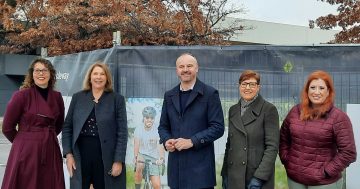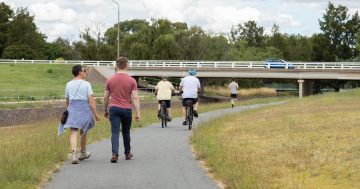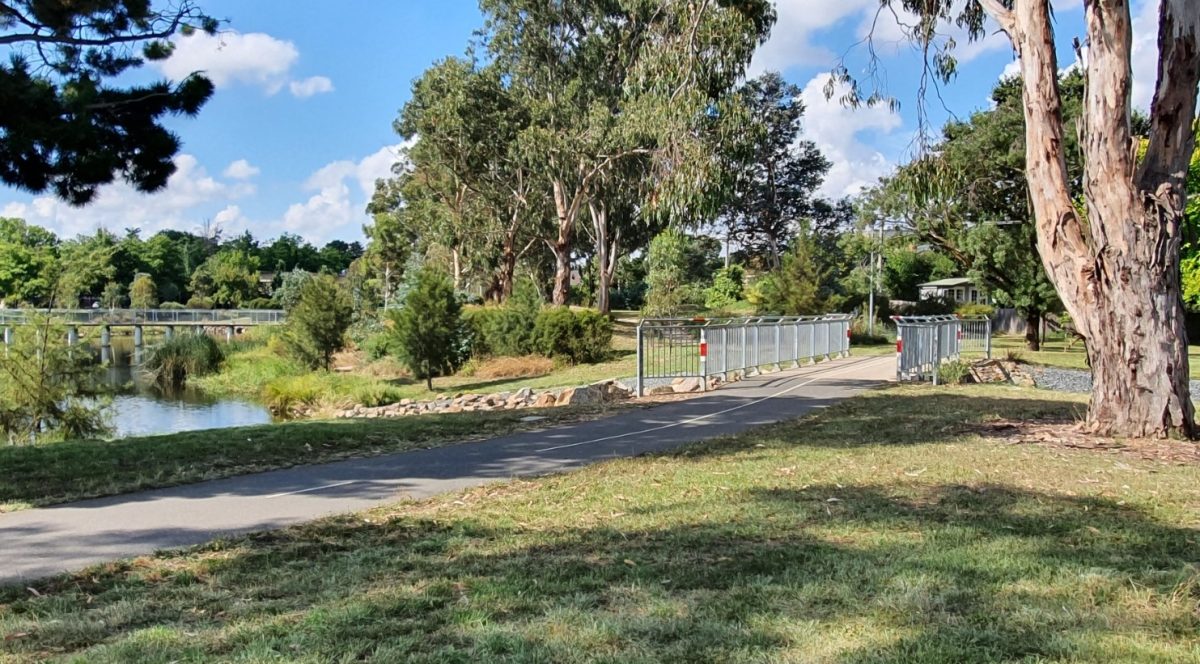
Sullivans Creek bike path was opened in December 1973. Photo: Dfadden, Wikimedia.
We Ride Australia, People for Bikes, the Australian Bicycle Council – all these organisations have named Canberra as the nation’s cycling capital over the years, and there’s a good reason for it.
We’re home to more than 370 dedicated cycling routes. Or to put it another way, 1000 kilometres of shared paths.
But they can all trace their origin to one, laid 50 years ago along the Sullivans Creek stormwater channel between Dickson and Turner.
In 1973, the Federal Government’s National Capital Development Commission (NCDC) elected to construct a pilot bike path to “test design principles and construction materials for evaluation … for use in designing of bicycle paths for Canberra”.
“Philosophically, there are many advantages in the wide community use of the bicycle and virtually no disadvantages,” the Commission published in a news feature at the time.
“But there are practical problems.”
Value was the biggest hurdle. Bike paths were expected to cost between $5000 and $10,000 per mile ($8047 to $16,093 per kilometre), depending on whether over- and under-passes were needed. And at the time, “extremely few people” cycled to work.
Nevertheless, the “relatively flat” green space along Sullivans Creek was chosen for the pilot track, and officially opened by the Minister for Urban and Regional Development on 19 December that year.
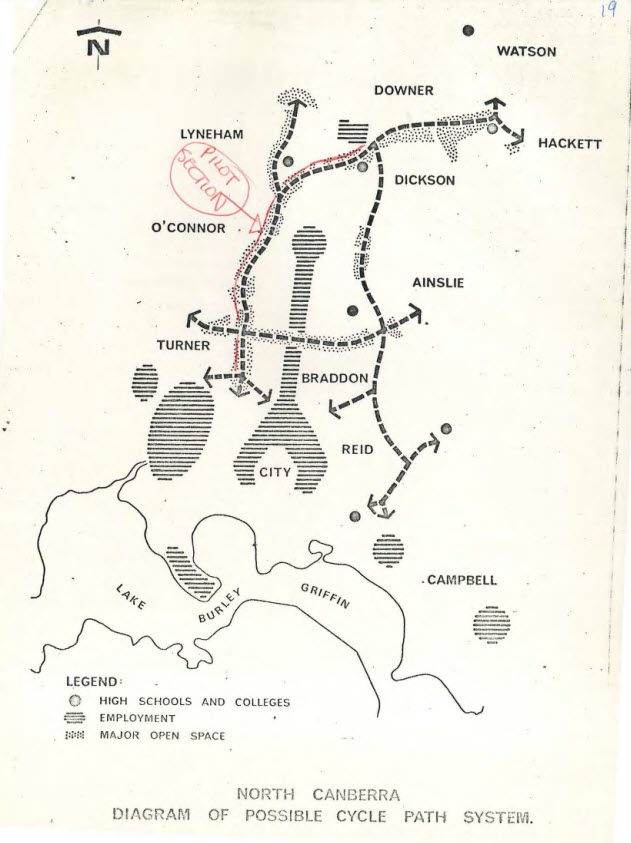
First bike paths proposed by the National Capital Development Commission (NCDC) in 1973. Photo: ArchivesACT.
A race between media personalities from CTC TV, radio station 2CA and The Canberra Times then took place, after which the Minister and the Commissioner of the National Capital Development Commission rode along the path “accompanied by nearly 100 youngsters”.
The wheels were now in motion, and the following year, a horde of 50 cyclists took to the roads in the city to campaign for more paths. Ultimately, this led to the formation of today’s lobby group, Pedal Power ACT.
And it worked. In 1976, the NCDC announced another 100 km of similar off-street paths would be constructed to create a city-wide network.
This year, more than 25 avid cyclists from Pedal Power ACT, including ACT MLAs Shane Rattenbury and Rebecca Vassarotti, converged on Canberra’s first bike path on Saturday, 16 December, to celebrate the milestone.
“We had a good time and nice weather, and went to the cafe afterwards,” board member John Widdup said.
The 80-year-old retiree said it was also an opportunity to pass on their hopes and dreams for the area.
The original bike path was widened in 2014 to cope with higher traffic, which by 2017, included 2000 bikes every day for an annual total of 469,382.
The ACT Government has plans to rip up the concrete in the Sullivans Creek stormwater channel and return it to a natural creek, with wetlands and wild grasses.
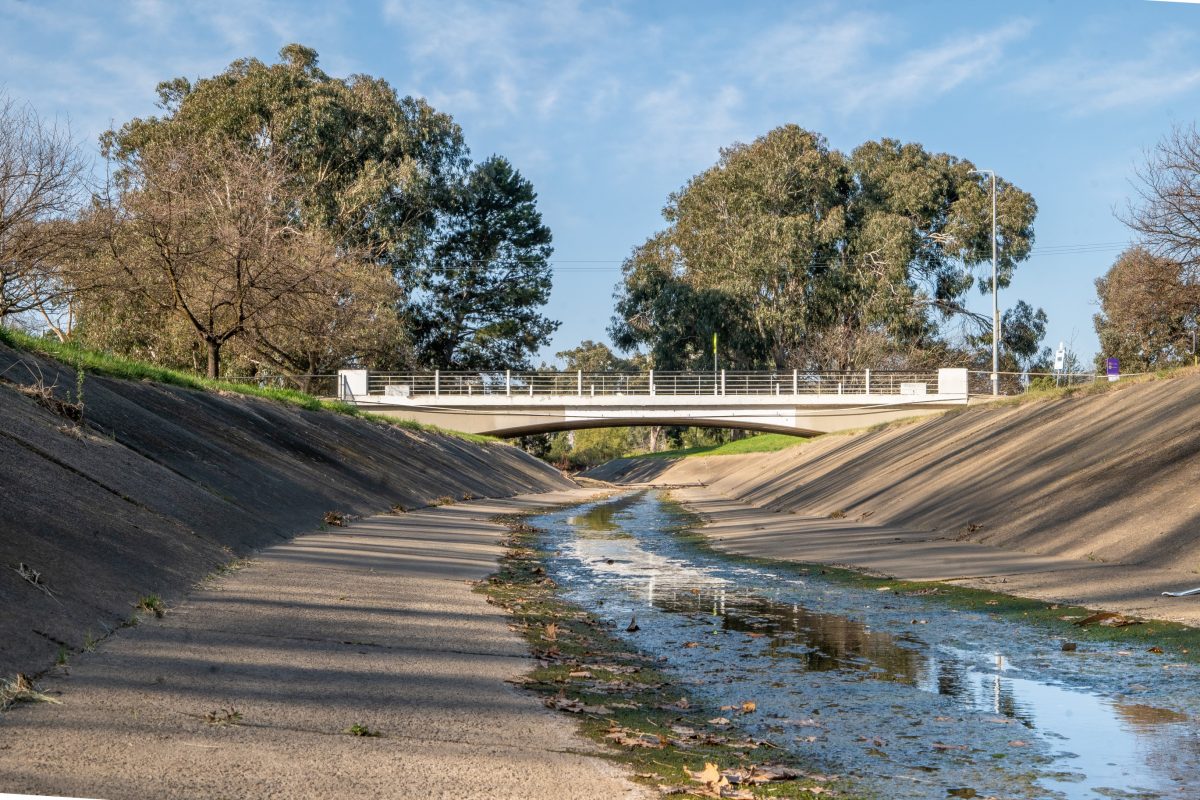
Sullivans Creek will soon be returned to its natural state, with plans to rip out the concrete and replace it with natural plants. Photo: ACT Government.
But John and the other Pedal Power members are pushing for this project to include further widening of the path.
“It has a lot of traffic on it – bicycles and pedestrians,” he said.
The group is pleased to see the government dedicated $10.4 million in the latest budget to constructing the 5-km ‘Garden City Cycle Route’ on the other side of Northbourne Avenue through the suburbs of Watson, Downer, Dickson, Ainslie, Braddon and the CBD.
This was originally floated in 1973 at the same time as the Sullivans Creek route, but “it’s taken 50 years to start it”.
“Fortunately, we’ve had a few extra paths in the meantime,” John said.
Preliminary designs on the Garden City Cycle Route, which uses a mix of off-road paths and on-road separated bike lanes, are completed, and construction on the first stage will take place over the next three years.















